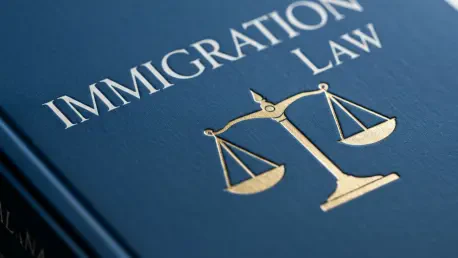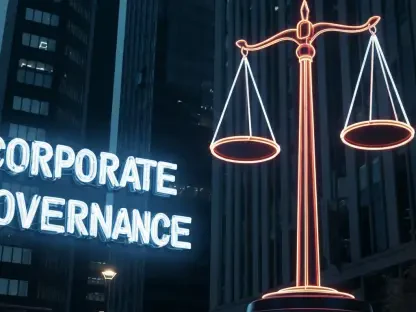Exploring the Core Issue of Immigration Enforcement
The United States stands at a critical juncture with immigration enforcement, grappling with an unprecedented surge of over 7 million encounters at the southwest border since October 2021, as reported by U.S. Customs and Border Protection (CBP). This staggering statistic underscores a deeper conflict: does the enforcement of immigration laws uphold the principle of due process, or does it ignite a divisive societal and political debate that fractures national unity? The tension between legal mandates and humanitarian concerns shapes a landscape where policy decisions are as much about ethics as they are about logistics.
Central questions emerge in this complex arena. Does the current system ensure fair treatment under the law for migrants, or does it falter under the weight of systemic overload and public scrutiny? Why do enforcement actions provoke such polarized reactions, ranging from accusations of cruelty to demands for stricter control? These inquiries highlight a nation wrestling with its identity as a land of opportunity versus a sovereign state with defined borders.
This discussion also tackles significant challenges, including managing massive migrant inflows that strain resources, navigating an overwhelmed asylum system with millions of pending cases, and striking a balance between national security imperatives and humanitarian obligations. These issues are not merely administrative but resonate deeply with public sentiment, influencing elections, community dynamics, and policy reform. The path forward demands a nuanced examination of both data and discourse surrounding immigration enforcement.
Historical and Societal Context of Immigration Policies
Immigration enforcement in the U.S. has long been a contentious issue, evolving through distinct policy approaches across different administrations. During President Obama’s tenure, an average of 941 individuals were deported daily, totaling 2.75 million over eight years, a record that earned him the nickname “Deporter in Chief.” In contrast, recent data from the Trump administration shows a slightly lower average of 810 deportations per day over the past six months, despite heightened border activity in preceding years. This comparison reveals how enforcement intensity and public perception often diverge based on political climate rather than raw numbers.
The societal impact of these policies is profound, manifesting in strained public resources, polarized opinions, and friction between federal mandates and local responses. Sanctuary policies adopted by certain states and cities, which limit cooperation with federal immigration authorities, often clash with national security priorities, creating a patchwork of enforcement that confuses both citizens and migrants. Meanwhile, communities hosting large numbers of undocumented individuals face challenges in allocating funds for education and healthcare, fueling debates over fairness and priority in resource distribution.
The significance of this issue extends beyond immediate logistics to touch on broader themes of national security, legal integrity, and economic stability. Immigration policy shapes perceptions of governmental efficacy and societal cohesion, especially in an era marked by deep political division. Addressing these challenges requires not just tactical adjustments but a cohesive strategy that aligns with both the rule of law and the values of compassion, ensuring that enforcement does not exacerbate existing tensions but seeks to bridge them.
Research Methodology, Findings, and Implications
Methodology
To analyze the state of immigration enforcement, this research draws on comprehensive data from U.S. Customs and Border Protection, focusing on border encounters and deportation statistics over recent years. This quantitative foundation provides a clear picture of the scale and trends in migrant inflows and enforcement actions. Additionally, court records on asylum case backlogs and denial rates offer insight into systemic bottlenecks that affect due process.
Beyond numbers, the approach incorporates qualitative analysis of political rhetoric and public reactions to enforcement policies. Speeches, media coverage, and community responses are examined to understand how language and framing influence perceptions of immigration law. This dual methodology ensures a balanced perspective, combining hard evidence with the softer, yet equally critical, dynamics of societal sentiment.
Findings
Data reveals a staggering volume of immigration activity, with nearly 7 million southwest border encounters recorded since October 2021, alongside an estimated 2 million undetected “gotaways” who evaded apprehension. The asylum system groans under the pressure of 2 million pending cases, with processing times stretching to seven years or more. Denial rates remain high, reaching up to 80% for applicants from certain regions south of the U.S., where economic hardship—a common driver—does not meet legal criteria for asylum.
Comparative deportation statistics further contextualize enforcement efforts. While historical averages under Obama reached 941 deportations daily, recent figures under Trump hover at 810 per day over the last six months. Despite lower numbers, public and political backlash appears disproportionately intense, often fueled by inflammatory language labeling enforcement agents with derogatory terms. Resource allocation disputes also surface, as cities grapple with funding support for undocumented migrants amid protests from local citizens over neglected domestic needs.
Implications
Practically, these findings suggest that immigration enforcement, while rooted in due process, struggles under an overburdened system incapable of handling current volumes efficiently. The presence of undetected “gotaways” raises legitimate security concerns, as the backgrounds and intentions of these individuals remain unknown, potentially including risks that cannot be dismissed. This gap in oversight challenges the integrity of border control measures.
On a societal level, divisive rhetoric surrounding enforcement actions threatens to escalate tensions, with extreme language risking incitement of hostility or violence against authorities. Sanctuary policies, while intended to protect vulnerable populations, often create friction with federal law, complicating enforcement and alienating segments of the citizenry who feel sidelined. This discord hampers the development of pragmatic, unified solutions to a national issue.
Theoretically, the debate over immigration enforcement mirrors broader conflicts over legality versus compassion and national identity versus global responsibility. It underscores a fundamental question of how a nation defines itself through its borders and laws while navigating moral obligations to those seeking refuge. These tensions suggest that policy must evolve to address not just immediate crises but also the underlying values that shape public discourse.
Reflection and Future Directions
Reflection
Analyzing immigration enforcement reveals a landscape fraught with complexity, where data-driven insights must contend with emotionally charged narratives. Balancing statistical realities—such as millions of border encounters—with the human stories behind each case proves challenging, as does interpreting the intent of undocumented migrants without comprehensive individual data. These gaps highlight the difficulty in forming a complete picture of the issue.
Limitations also arise from the fluid nature of political responses, which shift with electoral cycles and public mood, making long-term predictions or assessments elusive. Sanctuary policies, for instance, vary widely in impact across regions, and their long-term effects on community trust and legal coherence remain understudied. These uncertainties call for cautious interpretation of current trends.
Deeper exploration could focus on personal migrant experiences to humanize the statistics, shedding light on motivations and barriers faced. Similarly, examining how sustained sanctuary policies influence local economies and social fabrics over decades would provide valuable context. Such inquiries could enrich the discourse, moving beyond surface-level debates to address root causes and consequences.
Future Directions
Research should prioritize streamlining the asylum process to alleviate backlogs while ensuring fair and thorough adjudication. Developing efficient case management systems and increasing judicial resources could reduce waiting times, offering clarity to applicants and authorities alike. This focus would strengthen the due process framework at the heart of enforcement.
Enhanced border monitoring and data collection are also critical to address security concerns posed by “gotaways.” Investing in technology and inter-agency collaboration could improve tracking and risk assessment, minimizing undetected entries without compromising humanitarian access. Such measures would bolster confidence in border integrity.
Finally, mitigating divisive rhetoric demands attention through bipartisan dialogue and public education initiatives on immigration laws and realities. Studies exploring communication strategies that de-escalate tensions and foster mutual understanding could pave the way for consensus. Encouraging informed discussion over polarized soundbites remains essential for progress on this contentious issue.
Concluding Thoughts on Immigration Enforcement
Reflecting on the analysis, it becomes clear that immigration enforcement operates within a framework of due process, though it is hindered by systemic strain from unprecedented migrant volumes and security challenges like undetected entries. The polarizing discourse surrounding these efforts often overshadows practical realities, deepening societal divides rather than bridging them. Key data, from millions of border encounters to high asylum denial rates, paints a picture of a system stretched thin yet striving to adhere to legal mandates.
Looking ahead, actionable steps emerge as vital to address these challenges. Prioritizing technological upgrades for border surveillance could close gaps in security, while legislative reforms to expedite asylum processing might restore efficiency without sacrificing fairness. Additionally, fostering public forums for balanced discussion on immigration could temper divisive rhetoric, encouraging solutions rooted in shared goals rather than partisan conflict. These initiatives offer a pathway to reconcile the humanity of migrants with the necessity of law, aiming for a policy landscape that serves both justice and compassion.









